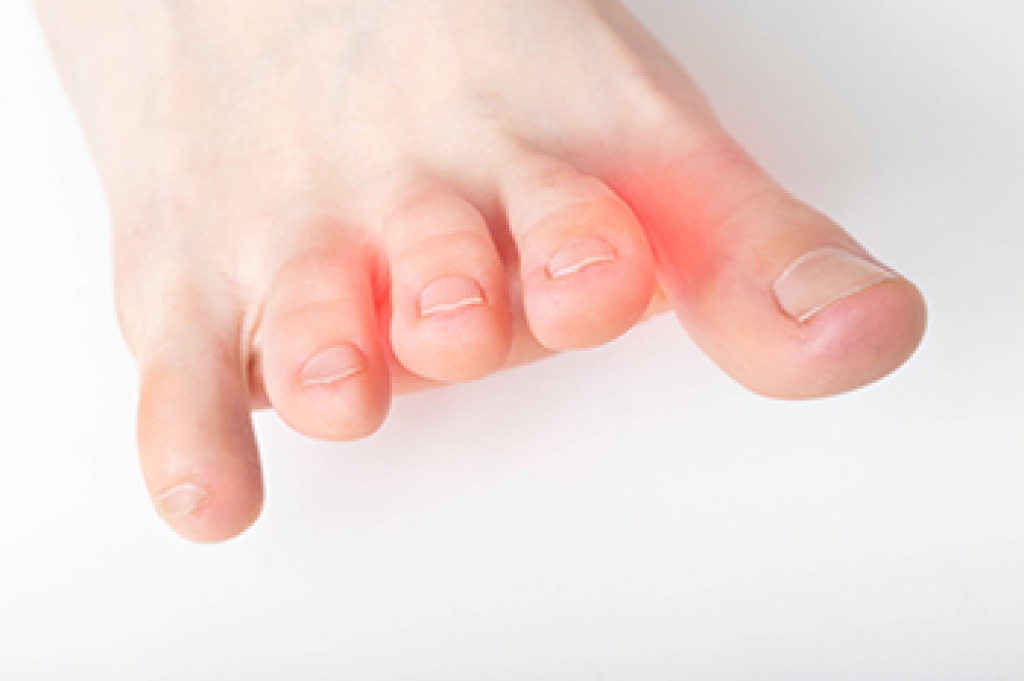 Morton’s neuroma refers to the thickening of the nerve tissue between the third and fourth toes. This thickening is caused by compression and irritation of the nerve. If left untreated, the nerve may become permanently damaged. Morton’s neuroma can develop from wearing shoes that are too tight in the toes and from shoes that have high heels. Running or other activities that involve repetitive irritation to the ball of the foot can also lead to Morton’s neuroma. Symptoms of this condition can include tingling, burning, numbness, and pain in the foot. Some have described the unique sensation of Morton’s neuroma as feeling like a pebble is stuck in the ball of the foot or like there is something stuck in their shoe like a scrunched-up sock. Symptoms typically begin gradually and may worsen over time. For more information about Morton’s neuroma, please consult with a chiropodist.
Morton’s neuroma refers to the thickening of the nerve tissue between the third and fourth toes. This thickening is caused by compression and irritation of the nerve. If left untreated, the nerve may become permanently damaged. Morton’s neuroma can develop from wearing shoes that are too tight in the toes and from shoes that have high heels. Running or other activities that involve repetitive irritation to the ball of the foot can also lead to Morton’s neuroma. Symptoms of this condition can include tingling, burning, numbness, and pain in the foot. Some have described the unique sensation of Morton’s neuroma as feeling like a pebble is stuck in the ball of the foot or like there is something stuck in their shoe like a scrunched-up sock. Symptoms typically begin gradually and may worsen over time. For more information about Morton’s neuroma, please consult with a chiropodist.
Morton's neuroma can be highly uncomfortable. If you are experiencing the symptoms of Morton's neuroma, please consult with one of the specialists from Thornhill Foot Clinic. Our chiropodists will assess your condition and provide you with quality foot and ankle treatment.
What Is a Morton’s Neuroma?
Morton’s neuroma is a condition in which a nerve located in the ball of the foot between the third and fourth toes thickens due to compression or irritation. Common causes of Morton’s neuroma include wearing shoes with high heels or narrow toe boxes, participating in running or court sports, an injury or trauma to the area, or pressure being placed on the nerve from foot deformities such as bunions or hammertoes. Left untreated, Morton's neuroma may result in permanent nerve damage.
Symptoms
Symptoms of Morton’s neuroma often start gradually and worsen over time. Typical symptoms include:
- Foot pain
- Tingling, burning, or numbness in the affected foot
- The unique sensation that something is inside the ball of the foot or that there is something stuck in your shoe while walking
Treatment
Non-surgical treatments for this condition may include padding or icing the affected foot, wearing an orthotic device, modifying activities or shoes to reduce pressure on the foot, and taking medications or getting injections to reduce pain and inflammation. Surgery may be needed if non-surgical treatments are ineffective.
If you have any questions, please feel free to contact our office located in . We offer the newest diagnostic and treatment technologies for all your foot care needs.
